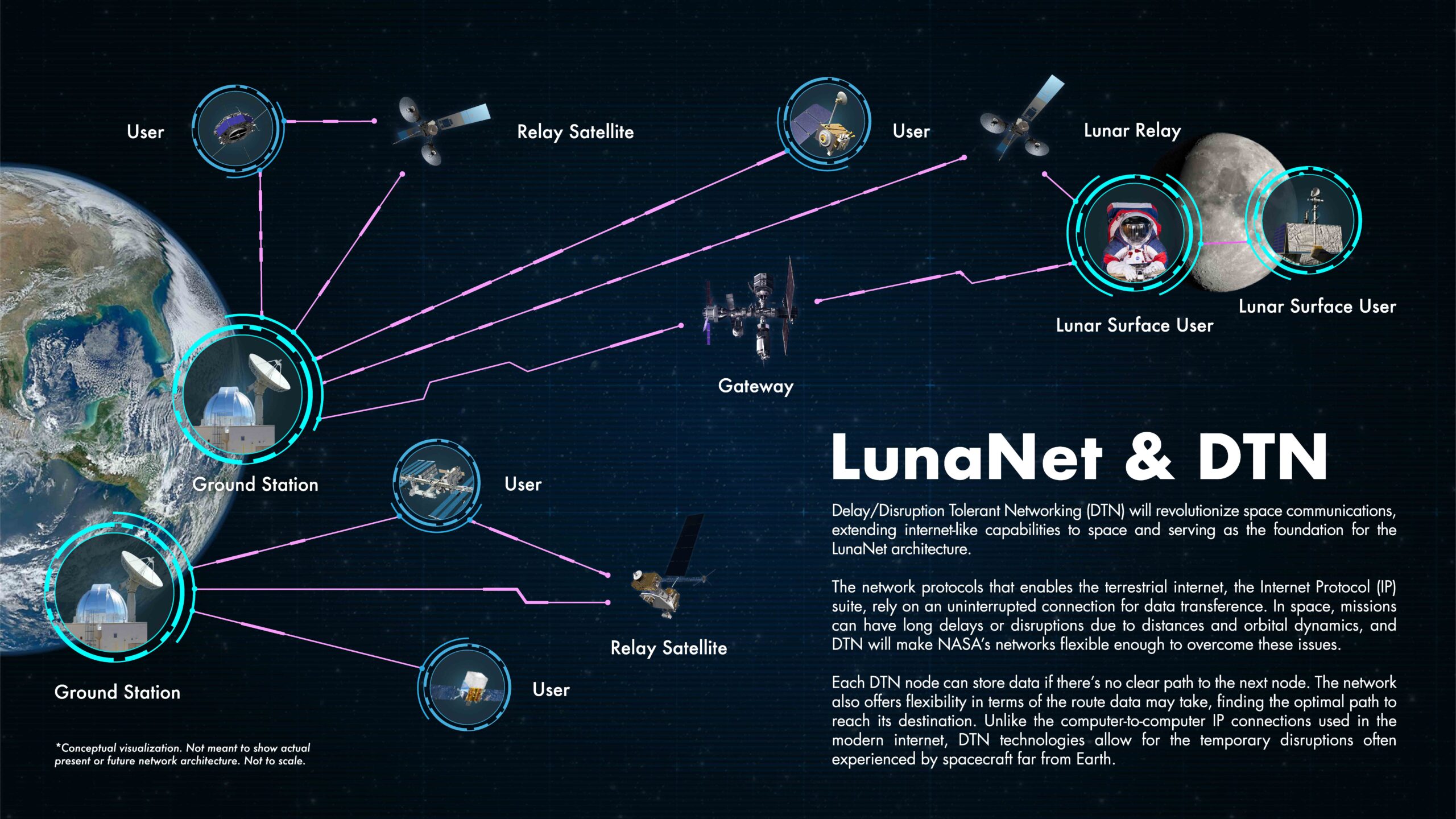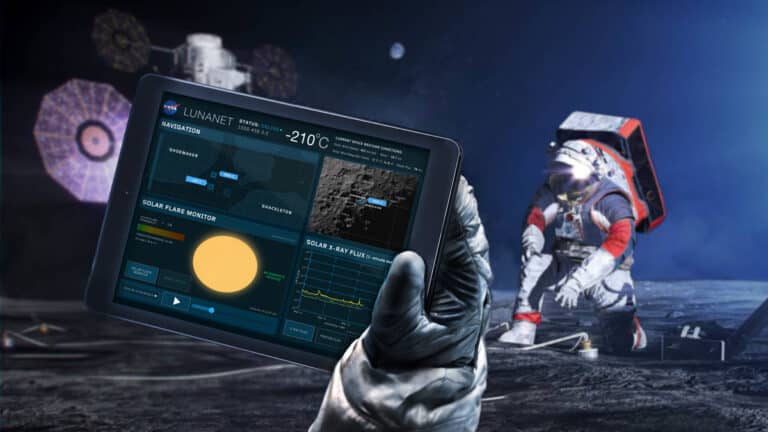The Moon will soon have its own internet
In December 2017, former President Donald J. Trump signed a Space Policy Directive urging the National Aeronautics and Space Administration (NASA) to send astronauts back to the Moon with commercial and international partners. Two years later, the president challenged the administration again, this time to send the first woman and next man to our natural satellite within the next five years.
In September 2020, NASA went public with the Artemis programme, promising a new era of lunar explorations. With Artemis 1 currently scheduled for launch in November 2021, the following missions seek to land the first woman and first person of colour on the Moon’s South Pole by 2024—using innovative technologies to explore more of the lunar surface than ever before. But once these astronauts set foot on the lunar terrain, they will require an internet-like architecture to support robust networking, navigation, detection and radio/optical science services in space. That’s where LunaNet comes in.
Developed by NASA’s Space Communications and Navigation (SCaN) programme, LunaNet is the first step in creating a ‘lunar internet’ that would help keep explorers connected to Earth. When it comes to space-based missions, communication with our planet is typically reliant on pre-scheduled links with either a space relay or a ground-based antenna. Given this coveted growth of lunar activity, however, relying on such links could limit communications opportunities and efficiency. This latest approach could thereby offer a network where users can maintain connections while eliminating the need to schedule data transference in advance.
LunaNet gets this job done by hinging on the concept of Delay/Disruption Tolerant Networking (DTN). Similar to the use of WiFi and mobile networks on Earth, users will be able to access the network through multiple nodes connected with others on and around the Moon. The framework ensures data flows seamlessly through the network and reaches its final destination despite potential signal disruptions. In the event of a disruption, however, DTN enables the nodes to store data until the path becomes clear. LunaNet will additionally allow industry, academia and international partners to operate and access the network no matter where they are situated.

In terms of lunar navigation, the LunaNet approach offers operational independence from data processing on Earth while maintaining high precision. Missions using the network will have access to location and timing signals—enabling astronauts and rovers to traverse the rocky surface and find their way back to base. “LunaNet will provide a new paradigm for Earth-independent navigation, assuring crewed and robotic missions can quickly and accurately determine their locations and feed that forward to their planning systems,” said Cheryl Gramling, Associate Chief for Technology of the Mission Engineering and Systems Analysis Division, in a press release.
On the Moon, it is also essential for astronauts to know when to prepare for an incoming hazard, such as a solar storm. LunaNet’s detection and information service thereby promises to provide such alerts and critical information to users—similar to the ones we get on our smartphones for hazardous weather. Using enhanced instruments and networking capabilities, astronauts, rovers and orbiters can be forewarned about incoming storms that bring increased radiation to the Moon. Coupled with the navigation aids mentioned earlier, these assets can further seek shelter from the same.
The services will also include a lunar search and rescue capability (dubbed LunaSAR) that leverages the expertise of NASA’s Search and Rescue (SAR) office, which has long developed technologies for terrestrial search and rescue.
Lastly, LunaNet’s science service will bestow nodes with the ability to perform measurements for the benefit of researchers back on Earth, using their radio and infrared optical communications links. The network of nodes would, therefore, not only foster baseline observations of the Moon but also allow for investigative science which will lead to new discoveries and deeper knowledge of our closest planetary neighbour. Using LunaNet signals, NASA can additionally learn more about communicating in space and plan for future voyages.
It has been 49 years since humanity last walked on the Moon. With NASA’s current aim of establishing a sustainable and long-term presence on the lunar surface by 2028, LunaNet offers an exciting opportunity for the space administration and the science and exploration community at large. As Dave Israel, communications architect at Goddard summed up in the press release, “We’re currently refining a cutting-edge approach that will meet the needs of lunar missions for many decades to come”—thereby preparing for the day we move even further into the solar system.






